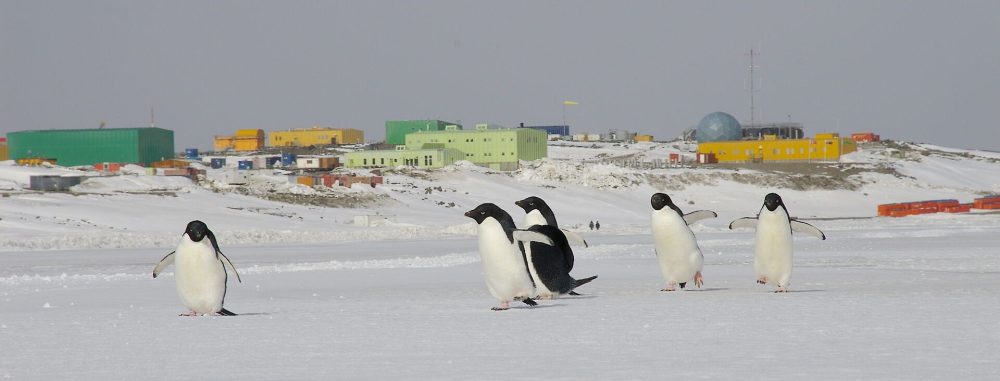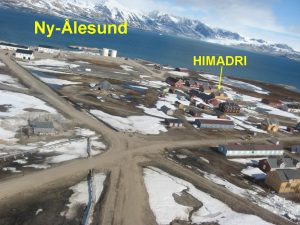 |
In the next five years in order to sustain its bases in Antarctica, India aims to have its first Polar Research Vessel (PRV) as told by Union Earth Sciences Minister Kiren Rijiju.
He noted that in 2014, the Cabinet had approved Rs 1,051 crore to acquire the vessel. A tender was also floated for the same. The government later abandoned the project as the company which had got the order to build the ship raised certain conditions that were not part of the tender process.
“However another effort was initiated and now, we are ready with the proposal to be moved by the EFC (Expenditure Finance Committee),” Mr Rijiju said.
 The cost of the vessel is now estimated to be ₹ 2,600 crore, he noted. “I am hopeful that in this financial year, we should be ready to propose this estimate and move in the Cabinet. In the next five years, we should be ready with the ship,” Mr Rijiju stated.
The cost of the vessel is now estimated to be ₹ 2,600 crore, he noted. “I am hopeful that in this financial year, we should be ready to propose this estimate and move in the Cabinet. In the next five years, we should be ready with the ship,” Mr Rijiju stated.
The PRV will play a crucial role in supporting India’s bases in Antarctica and the Arctic. India currently operates three research base stations in the polar regions, and continuous access to these stations is essential for conducting various research activities, especially those related to climate change.
Apart from logistical support, a PRV can serve as a research platform for scientists to conduct studies in the ocean realm, including the Southern Ocean. This vessel’s acquisition is crucial as it will enable India to carry out independent polar expeditions and scientific studies in these critical regions, rather than having to charter foreign PRVs for each expedition.
.
India currently has three Research Base Stations in the polar region of Antarctica:
Bharati (WAP IND-Ø4), Maitri (WAP IND-Ø3), and Dakshin Gangotri (WAP IND-Ø1) and one station Himadri at 78°55 North, 11°55 East on Spitsbergen island in the Arctic (picture on the right).
Himadri is India’s first permanent Arctic Research Station located at at the International Arctic Research complex, Ny-Alesund. It was set up during India’s second Arctic expedition in June 2008 and inaugurated on the 1st of July, 2008 by the Indian Minister of Earth Science.
Au cours des cinq prochaines années, afin de maintenir ses bases en Antarctique, l’Inde vise à avoir son premier navire de recherche polaire (PRV) comme le raconte Union Earth Ministre des Sciences, Kiren Rijiju.
Il a noté qu’en 2014, le Cabinet avait approuvé Rs 1 051 crore pour acquérir le navire. Un appel d’offres a également été lancé pour le même objet. Le gouvernement a ensuite abandonné le projet car l’entreprise qui avait obtenu la commande pour construire le navire avait posé certaines conditions qui ne faisaient pas partie du processus d’appel d’offres.
‘Cependant, un autre effort a été lancé et maintenant, nous sommes prêts avec la proposition qui sera présentée par l’EFC (Comité de financement des dépenses)’, a déclaré M. Rijiju.
 Le coût du navire est désormais estimé à 2 600 crores ₹, a-t-il noté. «J’espère qu’au cours de cet exercice, nous serons prêts à proposer cette estimation et à déménager au sein du Cabinet. Dans les cinq prochaines années, nous devrions être prêts avec le navire », a déclaré M. Rijiju.
Le coût du navire est désormais estimé à 2 600 crores ₹, a-t-il noté. «J’espère qu’au cours de cet exercice, nous serons prêts à proposer cette estimation et à déménager au sein du Cabinet. Dans les cinq prochaines années, nous devrions être prêts avec le navire », a déclaré M. Rijiju.
Le PRV jouera un rôle crucial dans le soutien des bases indiennes en Antarctique et dans l’Arctique. L’Inde exploite actuellement trois stations de base de recherche dans les régions polaires, et un accès continu à ces stations est essentiel pour mener diverses activités de recherche, notamment celles liées au changement climatique.
Outre le soutien logistique, un PRV peut servir de plate-forme de recherche permettant aux scientifiques de mener des études dans le domaine océanique, y compris dans l’océan Austral. L’acquisition de ce navire est cruciale car elle permettra à l’Inde de mener des expéditions polaires et des études scientifiques indépendantes dans ces régions critiques, plutôt que d’avoir à affréter des PRV étrangers pour chaque expédition.

.
L’Inde dispose actuellement de trois stations de base de recherche dans la région polaire de l’Antarctique :
Bharati (WAP IND-Ø4), Maitri (WAP IND-Ø3) et Dakshin Gangotri (WAP IND-Ø1) et une station
Himadri à 78°55 Nord, 11°55 Est sur l’île du Spitzberg dans le Arctique(photo de droite).
Himadri est le premier permanent de l’Inde Station de recherche arctique situé au Complexe international de recherche sur l’Arctique, Ny-Alesund. Il a été créé au cours Deuxième expédition indienne dans l’Arctique en Juin 2008 et inauguré le 1er juillet 2008 par le Ministre indien des sciences de la Terre.
Info de la Source Publié * ICI
